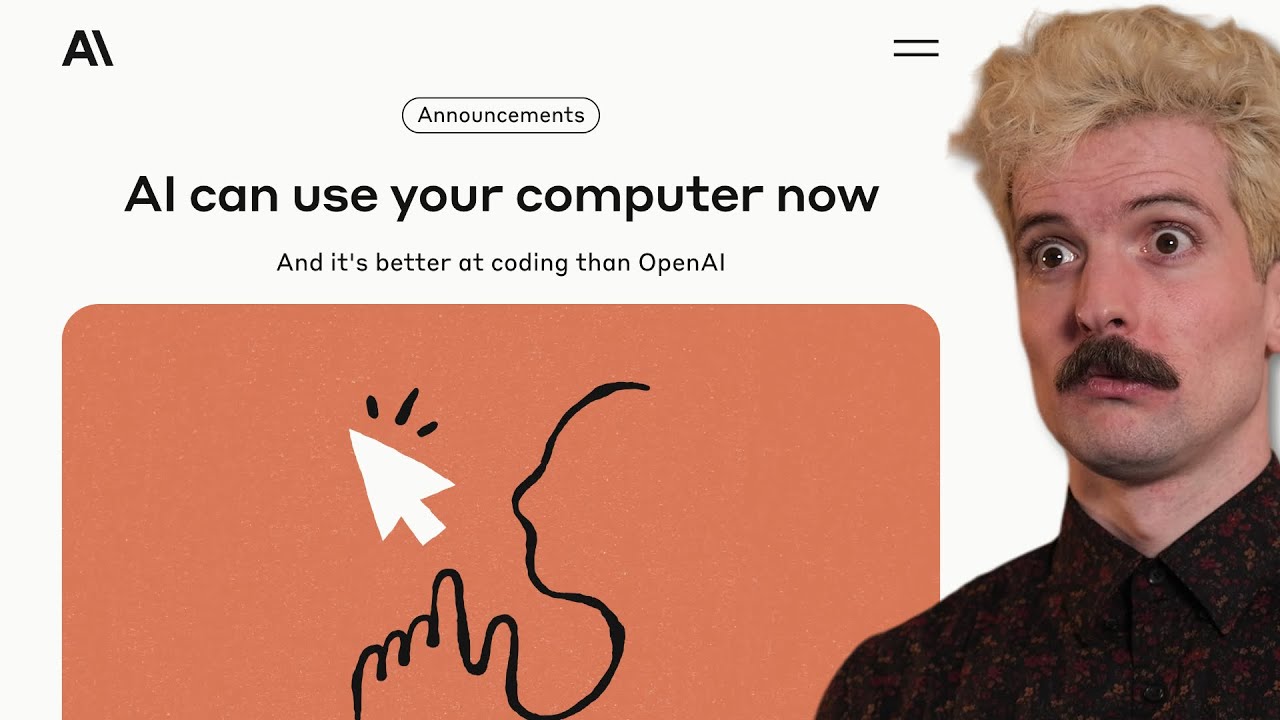The speaker highlights the impressive advancements of Claude 3.5 Sonet, particularly in coding tasks, which have surpassed OpenAI’s models, making it a preferred choice for developers. They also discuss the new “computer use” feature that allows Claude to interact with software interfaces, raising both excitement and concerns about the potential for both beneficial and harmful applications of this technology.
In the video, the speaker discusses their shift from using OpenAI’s models, like ChatGPT, to Claude, particularly highlighting the impressive advancements in Claude’s capabilities, especially in coding tasks. The recent release of Claude 3.5 Sonet and the introduction of a new model called Hau are emphasized, with the speaker noting significant improvements in performance and speed. Claude’s coding abilities have reportedly surpassed those of OpenAI’s models, making it a preferred choice for developers, particularly in environments like Cursor, where it is set as the default model.
The speaker dives into the technical details of Claude 3.5 Sonet, which has shown remarkable results in coding benchmarks, outperforming previous models and achieving high accuracy in tasks like code refactoring. The improvements in this model are particularly notable in multi-step coding tasks, where the likelihood of errors decreases as the model’s accuracy increases. The speaker expresses excitement about these advancements, especially since they come without increased costs or slower performance compared to earlier versions.
A major highlight of the video is the introduction of “computer use,” a new feature that allows Claude to interact with computer interfaces in a way similar to human users. This capability enables Claude to perform tasks that require navigating software, filling out forms, and executing commands based on user instructions. The speaker finds this development both fascinating and concerning, as it opens up new possibilities for automation but also raises questions about safety and potential misuse.
The video also touches on the implications of this technology, particularly regarding its potential for both beneficial and harmful applications. The speaker humorously speculates about the possibility of AI being used for scams, as well as for countering scams, drawing parallels to existing YouTube content that exposes fraudulent schemes. The discussion highlights the dual-edged nature of advanced AI capabilities, where the same technology can be used for both constructive and destructive purposes.
In conclusion, the speaker expresses a mix of excitement and caution regarding the advancements in Claude’s capabilities, particularly in coding and computer interaction. They emphasize the importance of responsible deployment and the need for ongoing feedback from developers to refine these technologies. The video wraps up with a light-hearted note about the evolving landscape of AI and its potential impact on various industries, leaving viewers intrigued about the future of AI tools like Claude.
